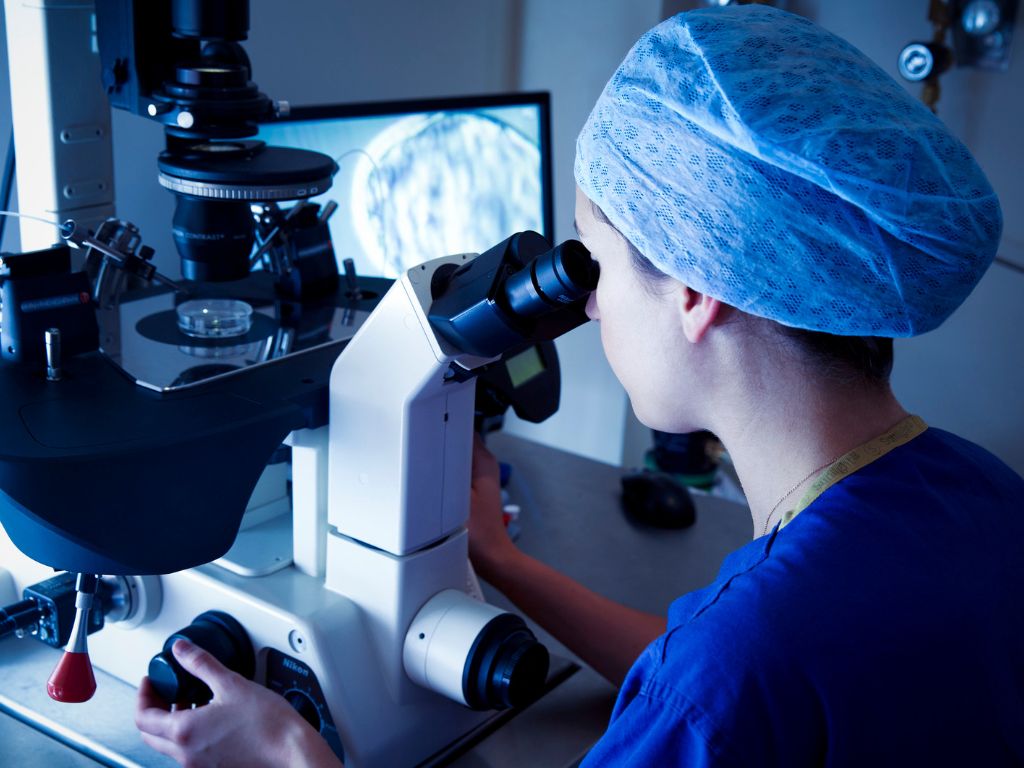
(In Vitro Fertilization – A Complete Guide by Nest & Co)
📢 Disclaimer – Nest & Co
The information provided is for educational purposes only and does not substitute professional medical or legal advice. The services described may be subject to legal restrictions depending on the country. Consult a healthcare or legal professional before making decisions.
What is IVF?
IVF (In Vitro Fertilization) is a form of assisted reproductive technology (ART) that involves retrieving eggs and sperm, fertilizing them in a lab, and transferring the resulting embryo(s) into the uterus.
- Since the first IVF baby was born in 1978 (Louise Brown, UK), over 8 million babies have been born worldwide through IVF.
- In the United States, about 2% of all babies are born each year through IVF or related ART procedures.
- In the UK, IVF accounts for around 3% of annual births.
IVF can help with:
- Ovulation disorders
- Severe male infertility
- Blocked or damaged fallopian tubes
- Unexplained infertility
- Previous failed fertility treatments
Preparing for IVF
Before starting treatment, most clinics will require:
- Infectious disease screening (both partners)
- Semen analysis: sperm count, motility, morphology, volume, and pH
- Female hormone panel: ovarian reserve, hormone levels, follicle count
- Uterine evaluation: saline ultrasound (sonohysterography) or hysteroscopy
The IVF Process – Step by Step
A typical IVF cycle lasts about 2–3 weeks, but multiple cycles may be needed.
1️⃣ Pre-IVF Suppression
Medication is used to control or suppress the natural menstrual cycle.
2️⃣ Ovarian Stimulation
Daily injections of gonadotropins (FSH, LH, or both) for 10–12 days, with ultrasounds and blood tests to monitor follicle growth.
When ready, a trigger shot is given 34–38 hours before egg retrieval.
3️⃣ Egg Retrieval
A minor procedure under sedation where eggs are collected via ultrasound-guided needle.
4️⃣ Fertilization in the Lab
Two main methods:
- Conventional IVF – sperm and eggs are combined and incubated
- ICSI – a single sperm is injected directly into an egg
Embryos are cultured until the blastocyst stage (day 5–6).
Optional genetic testing (PGT) can be performed.
5️⃣ Embryo Transfer
The uterine lining is prepared with hormones.
A thin catheter is used to transfer the embryo – a quick, painless procedure without anesthesia.
6️⃣ Pregnancy Test
About 9–12 days after transfer, blood or urine tests measure hCG levels to confirm pregnancy.
IVF Success Rates (Anglophone Context)
According to the CDC (US) and HFEA (UK):
- Under 35: 32–40% live birth rate per cycle
- 35–37: 25–30%
- 38–40: 15–20%
- Over 40: 5–10%
Risks & Health Outcomes for IVF Children
Long-term research in the US, UK, and Australia shows:
- Development, growth, and cognitive outcomes are comparable to naturally conceived children.
- No overall increase in cancer risk, though a slight increase in childhood leukemia risk has been noted in large-scale studies (about 1 extra case per 5,000 IVF/ICSI children).
IVF FAQs
What’s the difference between IVF and ICSI?
IVF allows sperm to fertilize eggs naturally in a lab, while ICSI injects a single sperm directly into an egg.
When should I take a pregnancy test after IVF?
Usually 9–12 days after embryo transfer.
Can I choose my baby’s gender with IVF?
In most countries, sex selection is only permitted for medical reasons (e.g., to avoid sex-linked genetic disorders).
🤝 Nest & Co – Your Partner in the IVF Journey
At Nest & Co, we know that IVF is more than a medical procedure – it’s an emotional and logistical journey.
We offer:
- Personalized guidance before, during, and after your IVF cycle
- Emotional support and stress management tools
- Administrative and logistical assistance with appointments, clinics, and travel
📞 Ready to start your journey?
Book a free consultation with Nest & Co today and discover how we can support you every step of the way toward parenthood.
